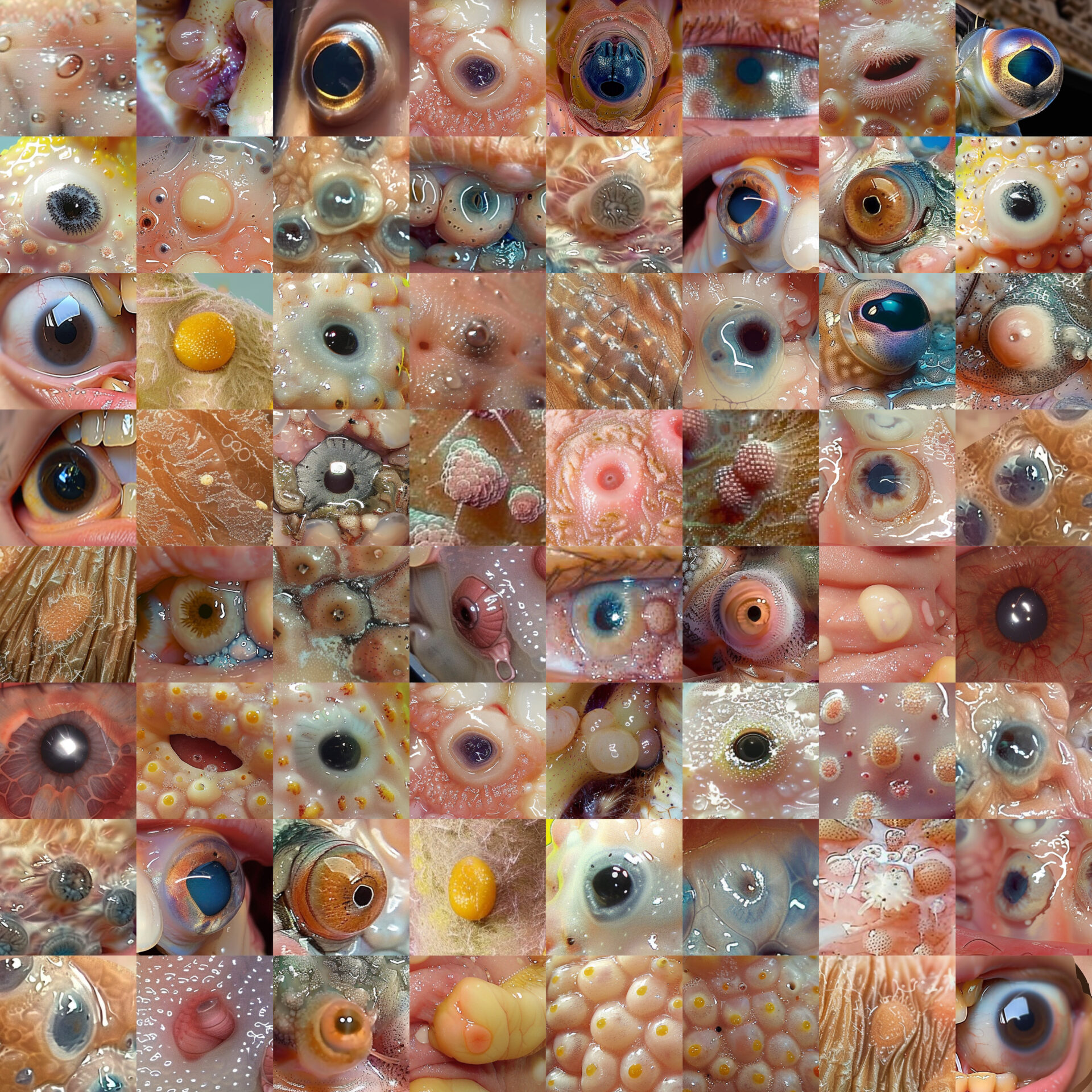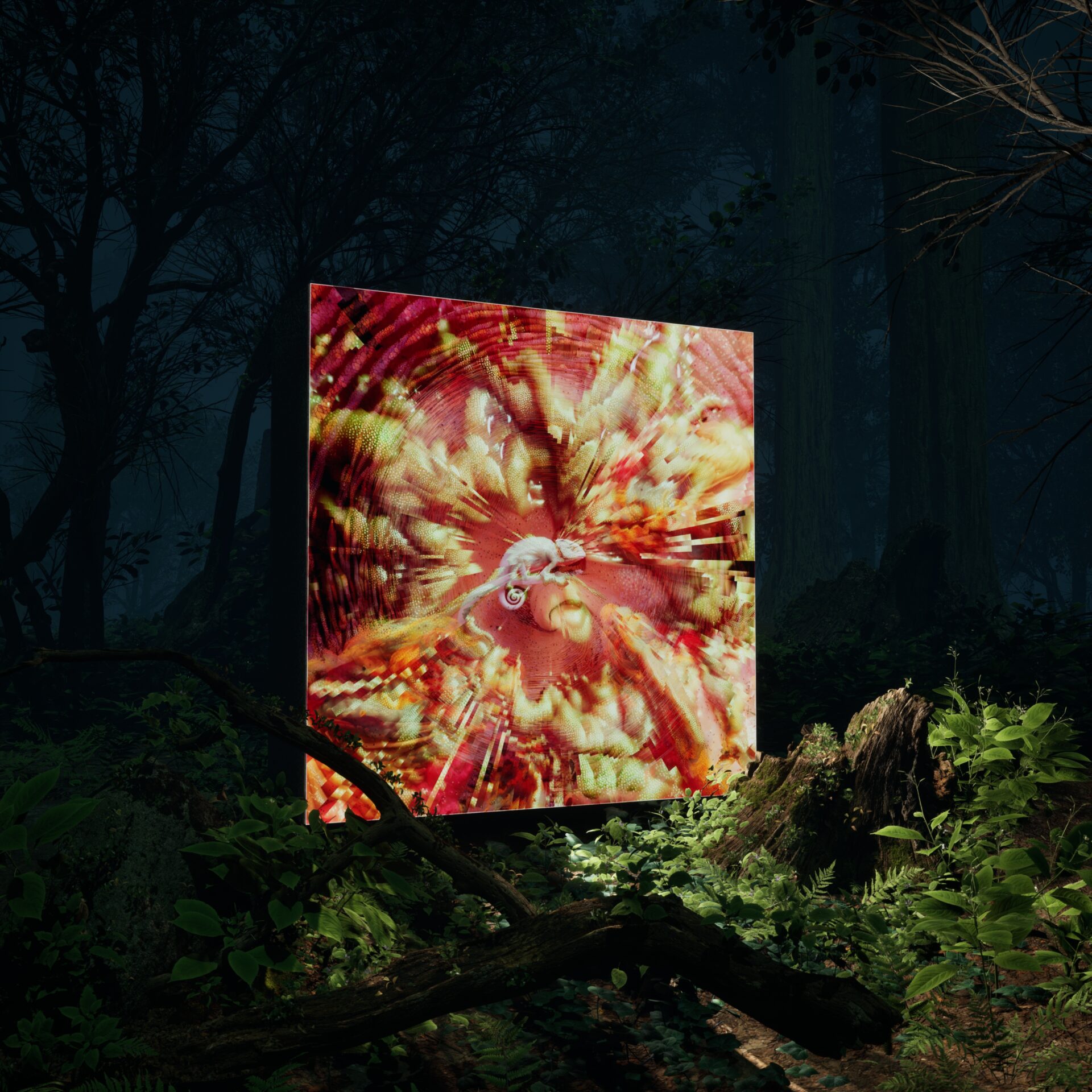Transient
The Transient of Camouflage
“Transient” explores the sequence of time and the sensory impact of fleeting moments. A creature adopts the characteristics of its surroundings and becomes invisible within them, existing in a prolonged state of stillness, as if time itself has frozen. However, in extremely brief instants, sensory overload and mutations suddenly flash through—both the environment and the chameleon undergo abrupt transformations, only to vanish just as quickly, as if they never existed. These momentary disruptions, akin to intrusive thoughts, shake the viewer’s perception of time and reality, but then immediately fade into the endless stillness. The work contrasts these fleeting moments with the static, inviting the viewer to linger in the space between capturing and missing, to feel the transient power of change.”
2024
Generative AI, Unreal Engine
2024 Tank Art Festival

Delving into the topic of “supernormal stimuli”, the project trains AI model based on skin disease and mutated organs, transfering the environment into ultra-short moments of mutations, to break the peaceful eternity and evoke audience’s physiological reaction like instrusive thoughts.
“Supernormal stimuli” redirects here. For the book by Deirdre Barrett, see Supernormal Stimuli.
Venus of Willendorf, figurine exaggerating body and breast stimuli.
A supernormal stimulus or superstimulus is an exaggerated version of a stimulus to which there is an existing response tendency, or any stimulus that elicits a response more strongly than the stimulus for which it evolved.
For example, it is possible to create artificial bird eggs which certain birds will prefer over their own eggs, particularly evident in brood parasitism. Some speculate humans can be similarly exploited by junk food. Organisms tend to show a preference for the stimulus properties (e.g. size, colour, etc.) that have evolved in nature, but when offered an artificial exaggerated stimulus, animals will show behaviour in favour of the artificial stimulus over the naturally occurring stimulus. A variety of organisms display or are susceptible to supernormal stimuli, including insects, birds, and humans.
Supernormal stimuli are present in areas of biology and psychology, but are also studied within other fields like sociology and art.
British academic Nigel Spivey demonstrates the effect in the first episode of the 2005 BBC documentary series How Art Made the World to illustrate neuroscientist Vilayanur S. Ramachandran’s speculation that this might be the reason for the exaggerated body image demonstrated in works of art from the Venus of Willendorf right up to the present day.

Exhibitions

2024.9.15-9.17
2024 Tank Art Festival
3 new projects/AI experiments showing at Tank Art Festival in Shanghai, 9.15-9.17
1. Tears of the Sky – my collaboration with Xi Wang about the eternity of the moment before the catastrophe destroy us.
2. Are we gazing at the same moon? – a project that argues the collective memories and the continuity of the moon.
3. Transient – how short can one moment be and how intrusive thoughts affect our perception?